Human vice in the fable of the donkey and the nightingale
Ivan Krylov. Fable "Donkey and Nightingale"
Russian works writers of the 19th in.
I. S. Turgenev wrote: “From childhood, Krylov was a typical Russian person all his life: his way of thinking, views, feelings and all his writings were truly Russian, and it can be said without any exaggeration that a foreigner who thoroughly studied Krylov’s fables, will have a clearer understanding of Russian national character than if he reads a lot of writings that treat this subject.
In this lesson, you will learn about another vice of Russian society, exposed by the great fabulist.
The fable, which will be discussed, was written more than a hundred years ago, but has not lost its relevance to this day.
Rice. 1. O. A. Kiprensky. “Portrait of I.A. Krylova", 1816 ()
The reason for the creation of the fable was an incident from the life of Krylov (Fig. 1): “Some nobleman (according to some - Count Razumovsky, according to others - Prince A.N. Golitsyn), perhaps following the example of imp. Maria Feodorovna, who patronized the poet, and perhaps sincerely wanting to make acquaintance with him, invited him to his place and asked him to read two or three fables. Krylov artistically read several fables, including one borrowed from La Fontaine. The grandee listened to him favorably and thoughtfully said: “That’s good, but why don’t you translate like Ivan Ivanovich Dmitriev?” “I don’t know how,” the poet answered modestly. And so the conversation ended. Returning home, the fabulist, touched to the quick, poured out his bile in the fable "The Donkey and the Nightingale." Kenevich V.F. From "Bibliographic and historical notes to Krylov's fables"
After the publication of Krylov's fable, they began to call it "The Nightingale". This nickname has entered the literature.
Let's turn to the text of the fable.
Donkey and Nightingale (Fig. 2)
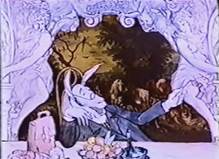
Rice. 2. Frame from the animated film based on the fables of I.A. Krylov "In the world of fables" ()
The donkey saw the Nightingale
And he says to him: “Listen, my friend!
You, they say, are a great master of singing.
I would very much like
Judge for yourself, hearing your singing,
Is your skill really great?
Here the Nightingale began to show his art:
Clicked, whistled
In a thousand frets, pulled, shimmered;
That gently he weakened
And languid in the distance resounded with a flute,
That small fraction suddenly crumbled through the grove.
Everyone was paying attention then
To the favorite and singer of Aurora:
The winds subsided, the choruses of the birds fell silent,
And the herds came.
Breathing a little, the shepherd admired him
And only sometimes
Listening to the Nightingale, the shepherdess smiled
The singer has died. Donkey, staring at the ground with his forehead;
“Fairly,” he says, “it’s not false to say,
You can listen without boredom;
It's a pity that I don't know
You are with our rooster;
Even if you were more aggravated,
If only I could learn a little from him."
Hearing such a court, my poor Nightingale
He fluttered and - flew to distant fields.
Deliver us, God, from such judges.
Vladislav Feofilovich Kenevich, contemporary and first systematic researcher literary activity Krylov, in “Bibliographic and Historical Notes to Krylov’s Fables” wrote: “It is known that Krylov was incomparably stricter with himself than his readers: he rewrote the same fable many times, reworked it every time and was satisfied only when there was not a single word left in it, which, as he expressed it, "he was tired of it." That is why we can say that every word in the fable of I.A. Krylova carries a certain semantic load.
So in fable two key images: Donkey and Nightingale.
What words and expressions does the fabulist use to create the image of the Donkey? Let's turn to the dictionary.
"Buddy"- a familiar address to a friend (note that the Nightingale was not a friend of the Donkey, which makes his address even more familiar and careless, which allows us to conclude that the Donkey was bad mannered).
Next is the word "master" seems to convey admiration. A master is a master, a virtuoso in his field, and even in superlatives. But consonance with the word "buddy", and even the obvious tautology "great master" again negatively characterizes the Donkey, testifying to his ignorance.
TAUTOLOGY(from the Greek tauto - “the same” and logos - “word, concept”) - repetition of the same different words. As a stylistic device, it belongs to the genus of pleonasm (excess).
"Considerably",- says the Donkey, after listening to the singing of the Nightingale. "Fairly" means "significantly, excellently." However, in explanatory dictionaries this word is always accompanied by the mark "colloquial", which means "colloquial". The same can be said for words. "staring" and "pricked up".
Participial turnover "staring at the ground forehead" reminds us of donkey stubbornness. And immediately after him - the advice to "learn a little" singing from a rooster, which, judging by the pronoun "ours", is a close friend of the Donkey. And now let's remember the famous proverb: "Tell me who your friend is, and I will tell you who you are." The limited rooster is the friend of the same ignorant Donkey.
The image of the Donkey makes the reader laugh. Such an image is called COMIC.
What artistic means Does Krylov convey the beauty and charm of the Nightingale's singing?
The Nightingale's singing is reminiscent of a whole concert. For this, Krylov uses the series homogeneous members: Verbs “snapped”, “whistled”, “given”, “crumbled”. As well as a comparison with a flute, a metaphor "scattered like small shots", epithet "languid" flute.
The singing of the Nightingale produces a wonderful effect on all who hear it. He charmed everyone with his singing. He brought peace to nature and people's lives: “the breezes subsided”, “the birds fell silent”, “the herds of animals lay down”, “the shepherd admired the singing”.
Everyone was paying attention then
Favorite and singer of Aurora ...
AURORA- the goddess of the morning dawn (ancient Roman mythology).
Let us pay attention to one detail: the Nightingale does not speak at all, only sings, by this the author shows that the ignorant (colloquial and colloquial) is alien to this hero, unlike the Donkey, who constantly says something, while using mostly colloquial and colloquial vocabulary.
The author uses the technique antitheses, contrasting the Nightingale, a master of his craft, a true singer of nature, who enchants with his singing, and the Donkey, stupid, ignorant, ill-mannered, who understands nothing in real art.
ANTITHESIS - stylistic device based on a sharp opposition of concepts and images.
The fable describes a situation that often occurs in real life. Someone self-confident and ignorant undertakes to judge about what he has no idea about.
The moral of the fable lies in the words: "God deliver us from such judges." Using the technique of allegory, the fabulist conveys to his reader the idea that if real art is often judged by those who do not understand anything about it, like the Donkey, then true masters, like the Nightingale, have a hard time.
MORALITY- this is an instructive conclusion from the main narrative, which is given at the beginning or at the end of the fable.
ALLEGORY- allegory - the image of an abstract concept through a specific image.
The fable "Donkey and Nightingale" was written by Ivan Andreevich Krylov more than a hundred years ago, but still has not lost its relevance, because such stupid judges as Donkey can be found in life in our time. Source).
Homework
- Get ready for expressive reading fables by I.A. Krylov "Donkey and Nightingale".
- * Create an illustration for I.A. Krylov's "Donkey and Nightingale", using some methods of creating comic Images. for example grotesque (exaggeration): the huge head of the Donkey, as a sign of a "big" mind, but an exaggeratedly small figure of the Nightingale, emphasizing that its significance is not in appearance, but in the ability to sing. Or detail. For example, Donkey has glasses that he does not need, because he sees perfectly without them, so he does not look into his glasses, but over them.
- * Suppose that the Donkey, because of his stubbornness, nevertheless decided to introduce the Nightingale to his friend the Rooster and wrote about it in a letter. The nightingale is well-mannered and polite, so he answers the letter of the Donkey. knotted small correspondence. Come up with this correspondence (keep the features of the speech of each of the characters).
- What human vices and shortcomings does I. A. Krylov ridicule in his fables?
- How is a fable different from a fairy tale?
- What is the historical meaning of I. A. Krylov’s fable “The Wolf in the Kennel”?
- Why would the Lamb (from the fable "The Wolf and the Lamb") never be able to justify himself before the Wolf?
- What is the moral of this fable?
- In the Quartet fable, the Nightingale judges the musicians; in the fable "The Donkey and the Nightingale", the Donkey acts as a judge of nightingale singing. What is the difference between these two judges?
- What is the moral of the fable "The Donkey and the Nightingale"?
- What is the wisdom of the fables of I. A. Krylov?
- Why is it easy for artists to illustrate the fables of I. A. Krylov?material from the site
- What is the purpose of the fabulist using allegory?
- What is common in the author's attitude towards his young heroes in the fables "Two Boys", "The Little Crow", "The Boy and the Snake"?
Each Krylov's fable is a "casket with a secret." It contains both wise advice, and a warning, and a request. Hearing the voice of the author is not given to everyone. Those who want to get rid of vices and shortcomings will hear and draw a conclusion. Puffy, narcissistic, dishonest will not find anything useful for themselves in the fable. Under the masks of the Bear, Fox, Wolf and other animals and birds, people are hiding. The fabulist notices and ridicules everything negative qualities person: flattery, cowardice, dishonesty, self-interest, lies, envy, cunning.
In 1812 began Patriotic War, in which two forces converged, two armies: the French led by Napoleon and the Russian led by Kutuzov. Moscow was doomed. If Kutuzov decided to defend the city, then the Russian army would suffer big losses. Kutuzov left Moscow. Napoleon entered the city and set it on fire. But he soon understood the tactics of the Russian commander and sent Kutuzov an offer of peace, but he did not want to negotiate with the enemy. Napoleon had to leave Moscow. Kutuzov made it so that Napoleon was forced to go to Mozhaisk and retreat along the old Smolensk road. This road was disastrous for the French: burned cities and devastated villages stood on it. These days, Krylov's fable "The Wolf in the Kennel" came out. AT gray wolf everyone could recognize Napoleon in his gray marching coat, and in the Wolf's negotiations with the Huntsman - Napoleon's attempts to negotiate with Kutuzov.
After the battle near Krasnoye, Kutuzov circled the troops, congratulating them on their victory, and then, smiling, pulled out a paper folded in four from his pocket. “Here, listen to what a fable our eloquent Krylov sent me ...” Kutuzov began to read. Having reached the verse “You are gray, and I, buddy, am gray,” the general took off his cap, and everyone, seeing his silvery gray hairs, could not resist exclamations of enthusiasm. When did he read final words fables, then a loud “cheers” swept through the army.
The nightingale himself is a master of singing, so he has the right to say: “... you are not fit to be a musician!” He does not even need to listen to the play of these musicians - just look at those who make up the quartet. The donkey is the personification of mediocrity, shameless and arrogant stupidity. He advises, believing that he understands art better than the Nightingale, while he does not understand anything about it.
The fables of I. A. Krylov, written about two hundred years ago, speak of what has always excited and will excite people. About good and evil, about cowardice and deceit, about intelligence, talent and stupidity. AT popular expressions Krylov's fables - all the wisdom of the great fabulist: "the miser loses everything, wanting to get everything"; "helpful fool more dangerous than the enemy»; “strength without mind is a bad treasure”; “and give a thief at least a million - he will not stop stealing”; “almost everyone has the same calculation in everything: who will be the best to fool, and who will deceive whom more cunningly”; “You are gray, and I, buddy, are gray”, etc.
The fables of I. A. Krylov “Two Boys”, “The Crow”, “The Boy and the Snake” talk about young heroes and addressed to them. With all the differences in plots and characters, they teach young readers to pay attention to those with whom they have to communicate. The lack of experience and the ability to assess the situation hinders the heroes in a variety of circumstances. Seine - in a relationship with a lively friend, Voronenka - during his "hunt", careless Boy - at a chance meeting with a Snake.
Krylov wrote a lot of wonderful fables that are instructive, and among them I would like to highlight Krylov's fable "The Donkey and the Nightingale", and in order to get to know the plot of this fable better, we suggest studying Krylov's fable "The Donkey and the Nightingale" in brief.
Krylov Donkey and Nightingale
It all starts with the meeting of the donkey and the nightingale. The donkey saw the nightingale and he wanted to listen to his singing, so he offered to sing to the nightingale, and he would listen and judge for himself: "Is your skill truly great?" It was not difficult for the nightingale to sing for the donkey and he sang. The nightingale sang in a thousand ways, he whistled, and clicked, and pulled, and shimmered. His song was wonderful. While he was singing, everything around froze: the river, and the birds, and the flocks, and the same shepherd listened.
But, here the nightingale finished his singing. The donkey, instead of praising the nightingale, compared it to a rooster, and advised the rooster to learn to sing. The nightingale did not expect such a trial, turned around and flew away, if only to get away from such a judge.
Moral of Krylov's fable Donkey and Nightingale
The moral of Krylov's fable sounds at the end like this: "God deliver us from such judges." In other words, Krylov says in a fable that it is impossible to judge the knowledge and skills of others if he himself is not in the know, if he himself does not understand and understand, for example, singing. At the same time, talented people should not pay attention to the judgments of such judges, and yet in life very often talents have to deal with judges who do not understand the issue, who are stupid, like that donkey. Talented people do not need their recognition, and like a nightingale, you need to fly away and go further towards your goal, developing your talent and achieving success in life.
This page searched for:
- history of the fables of the donkey and the nightingale very briefly
- a brief analysis of Krylov's fable the donkey and the nightingale
- a summary of the donkey and the nightingale for the reader's diary
- compare the fable of the donkey and the nightingale with the fable of friends
- your favorite fable of Krylov essay donkey and nightingale
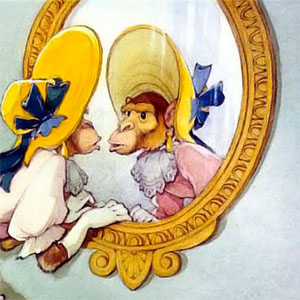 Summary: Mirror and Monkey (Krylov)
Summary: Mirror and Monkey (Krylov)
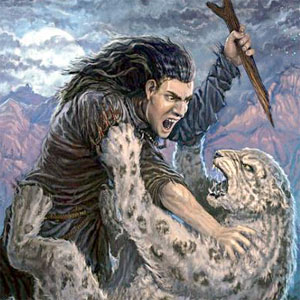 Summary of "Mtsyri", Lermontov
Summary of "Mtsyri", Lermontov
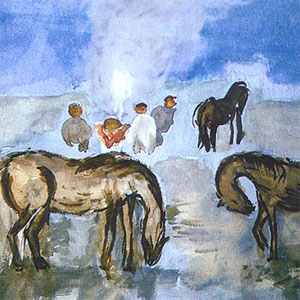 Summary Bezhin Lug, Turgenev
Summary Bezhin Lug, Turgenev
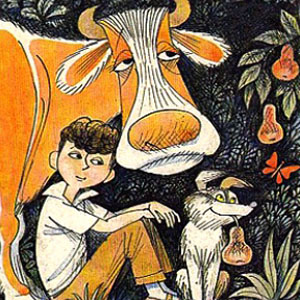 Summary: Chick and Pushkin (Iskander)
Summary: Chick and Pushkin (Iskander)
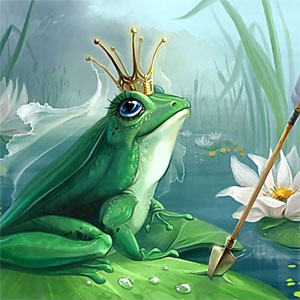 Summary: The Frog Princess
Summary: The Frog Princess
 Two heads and six legs; four walk, and two lie still
Two heads and six legs; four walk, and two lie still Self-esteem - what is it: concept, structure, types and levels
Self-esteem - what is it: concept, structure, types and levels Cassandra's Path, or Pasta Adventures War on Earth and Underground
Cassandra's Path, or Pasta Adventures War on Earth and Underground